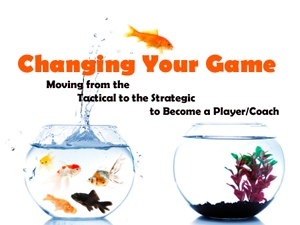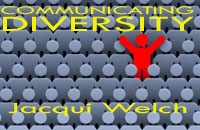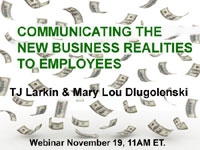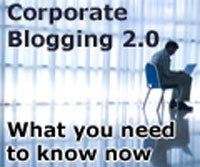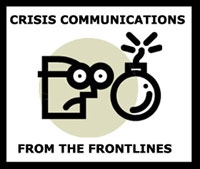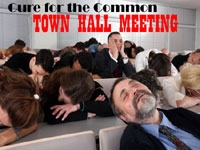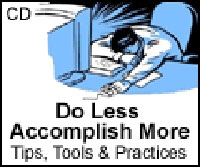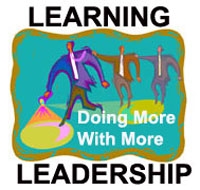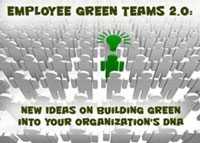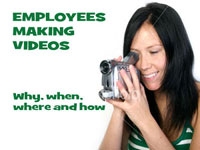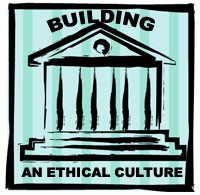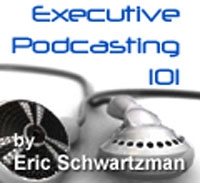At Cisco, they’ve changed the way they use words. It’s saving them money and helping them work together better. It’s connecting the internal culture to the business in deeper, more meaningful ways. And that’s helping them serve customers better and sell more.
In this session, Mark Buchanan, program lead for Cisco’s brand language initiative, paints a picture of how Cisco is changing the way 75,000 employees are using words across a $130 Billion business. He’ll walk you through how the brand language team set the plan in motion and made lasting changes. He’ll include practical tips and share insights, successes, and challenges. And he’ll give you his thoughts about how the lessons from Cisco can make a difference for your business.
The session includes:
- Evaluating the opportunity
- Aligning your voice with your business
- Connecting with your audience
- Scaling the program
- Making it stick
Presented by:
 Mark Buchanan is the program lead for brand language at Cisco. He’s helping the company use language that is simpler and more distinctive. And he’s helping bring empathy back to a technology company that has always cared about people, but has found those values challenged by rapid growth and increasingly complex technology. He’s worked with Sales, Marketing, Engineering, Services and Corporate Communications and has seen impressive results across every function. Together, Mark and the people at Cisco are changing the culture of language and communications, around the world for 75,000 employees, 50,000 contractors and vendors, across a $130 billion business.
Mark Buchanan is the program lead for brand language at Cisco. He’s helping the company use language that is simpler and more distinctive. And he’s helping bring empathy back to a technology company that has always cared about people, but has found those values challenged by rapid growth and increasingly complex technology. He’s worked with Sales, Marketing, Engineering, Services and Corporate Communications and has seen impressive results across every function. Together, Mark and the people at Cisco are changing the culture of language and communications, around the world for 75,000 employees, 50,000 contractors and vendors, across a $130 billion business.
Executives say they want more strategic communication support. Yet they and others still have high expectations for tactics. Plus, communication team members also are often more comfortable delivering on the tactics.
So should you change your game? And can you change your game? And will you still be around to share your success stories? Yes, yes, and yes.
In this insightful webinar, Sreejit Mohan, Director, Public Policy and Communications of Bayer HealthCare, and Liz Guthridge of Connect Consulting will share tips from their playbook on how to move from player to player/coach and become an indispensible partner to the business. They’ll also share the five questions you must ask yourself.
Already a member? View Replay
The Challenge:
The challenges the Bayer HealthCare communication team faced are common to other corporate communication departments today. The Bayer HealthCare team had noticed a divergence in what they were doing day-to-day and what the workforce, including the executives, wanted in communication support. In consultation with executives, they realized they needed to provide more opportunities for:
- Executives and employees to engage in direct dialogue to build greater trust
- Employees to learn more about the business challenges facing the company
- Executives to improve their informal and formal communication skills.
You’ll learn:
- How to know when it’s time to make major changes
- The three key makeover phases (redefining purpose, streamlining processes to free up time and resources, and developing a leader communication effectiveness program) that Bayer used
- How to keep delivering on commitments while making changes as well as develop your staff to prepare for the new work and challenges they face
- How to adopt the mindset of a coach/teacher/leader
- Effective ways to build and capitalize on relationships with leaders.
 Sreejit Mohan, Director, Public Policy and Communications, joined Bayer HealthCare in 2006 from Fleishman Hillard where he was a Vice President. In 2007, Sreejit was one of PRWeek’s “40 under 40” PR professionals—those younger than age 40 doing outstanding work.
Sreejit Mohan, Director, Public Policy and Communications, joined Bayer HealthCare in 2006 from Fleishman Hillard where he was a Vice President. In 2007, Sreejit was one of PRWeek’s “40 under 40” PR professionals—those younger than age 40 doing outstanding work.
 Liz Guthridge is is a consultant, author, and trainer specializing in strategic change leadership and communications. Department leaders of Fortune 1000 companies hire Liz and her firm Connect Consulting Group LLC when they need their people to adopt new initiatives and change the way they work. Before she founded Connect in 2004, Liz was a principal with several global change and HR consulting firms.
Liz Guthridge is is a consultant, author, and trainer specializing in strategic change leadership and communications. Department leaders of Fortune 1000 companies hire Liz and her firm Connect Consulting Group LLC when they need their people to adopt new initiatives and change the way they work. Before she founded Connect in 2004, Liz was a principal with several global change and HR consulting firms.
In this age of rapid communication, openness and transparency, it becomes more important than ever to find common ground and forums for dialogue with stakeholder groups beyond customers and shareholders. Mutually beneficial alliances with environmentalists, health-care advocates and similar groups can provide insights into markets, societal trends and public concerns. Done well, such alliances can enhance the reputation of both the company involved and the advocacy group. Learn how McDonald’s and Tyson Foods have implemented mutually beneficial alliances with advocacy groups and NGOs.
What You Will Learn:
- What works and what doesn’t in building alliances with advocacy groups
- NGOs as friends, foes and collaborators
- Best practices in forming productive alliances with advocacy groups
Questions Asked and Answered
- What are some of the criteria you use to select NGO’s?
- Do you see significant variance between the individuals within NGO’s?
- Does McDonalds carry on an open dialogue with PETA and other antagonists in the 9 and 10 zone?
- Can you talk more about using social networking for NGO engagement?
- CSPI and PETA are very antagonistic; what guidance can you offer for dealig with these specific entities?
- What’s the most effective approach for a national company with only 1 PR and 1 Community Relations employee and no agency?
- Is it best to focus on one issue like Tyson is doing with hunger, and establish leadership over long term, or try to be involved in many other issues on a lesser scale?
- Are there any examples faith-based organizations who have been good partners for you to work with?
- Social media engagement takes a lot of manpower to do. Are either of you adding to staff to engage online with NGO’s?
- Can you both give examples of how you have enabled local leaders to emulate your corporate strategies on a local basis?
- Who is the most important audience to hear about your commitment to hunger?
Presented by:
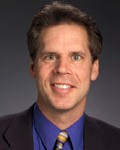 Bob Langert is Vice President, Corporate Social Responsibility for McDonald’s. His responsibilities with McDonald’s include social responsibility efforts, including McDonald’s social responsibility reporting; Global environmental management systems and issues; Global supply chain issues (e.g., sustainable agriculture, biotechnology, animal agricultural and animal welfare programs); Issues management; and part of McDonald’s “Balanced, Active Lifestyles” team.
Bob Langert is Vice President, Corporate Social Responsibility for McDonald’s. His responsibilities with McDonald’s include social responsibility efforts, including McDonald’s social responsibility reporting; Global environmental management systems and issues; Global supply chain issues (e.g., sustainable agriculture, biotechnology, animal agricultural and animal welfare programs); Issues management; and part of McDonald’s “Balanced, Active Lifestyles” team.
Langert joined McDonald’s in 1983, with management positions in logistics and packaging purchasing in the 80s; and responsibilities for environment, energy management, animal welfare, Ronald McDonald Children’s Charities, emerging issues’ management, and, most recently, social responsibility in the 90’s through today. He earned an MBA from Kellogg School of Management, Northwestern University, Evanston, Illinois; a BA from Lewis University, Romeoville, Illinois, and a BS at Hamburger University.
 Ed Nicholson is currently director of corporate community and public relations for Tyson Foods, Inc. He has been with Tyson since 1995, previously serving as the company’s director of media relations, and primary media spokesperson. Ed is part of a team that helps create and implement community relations strategies in the 100 U.S. communities in which Tyson Foods has operations. He is also responsible for managing relationships within Tyson’s primary area of philanthropic activity, hunger relief. He has been at the forefront of Tyson’s use of social media, which is focused on creating community around the issue of hunger.
Ed Nicholson is currently director of corporate community and public relations for Tyson Foods, Inc. He has been with Tyson since 1995, previously serving as the company’s director of media relations, and primary media spokesperson. Ed is part of a team that helps create and implement community relations strategies in the 100 U.S. communities in which Tyson Foods has operations. He is also responsible for managing relationships within Tyson’s primary area of philanthropic activity, hunger relief. He has been at the forefront of Tyson’s use of social media, which is focused on creating community around the issue of hunger.
 Peter Faur, president of RightPoint Communications Inc., has been
Peter Faur, president of RightPoint Communications Inc., has been
on the front lines of controversies ranging from environmental spills and cleanups to industrial fatalities to allegations of animal abuse at marine theme parks. He is known for keeping a cool head, getting people from many walks of life to talk together, and helping people learn how to explore each other’s concerns so they can find mutually agreeable solutions to problems they face. Faur moved to Phoenix in late 2002 to head the communications staff of Phelps Dodge Corp., a copper-mining company acquired in 2007 by Freeport-McMoRan Copper & Gold Inc. As vice president-corporate communications, he was responsible for all the company’s internal and external communications programs. He designed and implemented a community relations and communications model now replicated in several communities in which the company is pursuing environmental remediation projects. While the issues are controversial, the company has been able to build bases of support and has kept strong, results-oriented dialogues in place.
Additional Resources:
- McDonald’s Corporate Responsibility homepage
- Tyson Foods Hunger Relief Homepage – Recent News Releases
- Peter Faur’s Common Ground Blog Post on this webinar
Want a single tool in your communications arsenal that will help you plan your strategies, prioritize activities and evaluate results?
Measurement can do all this and more. In this seminar you will learn to think of measurement as a helpful tool to guide your communication programs and as an evaluative process to help you shine in your organization.
If you are not yet getting the full potential out of your measurement program, discover what you’re missing in this content-packed presentation by award-winning communication and measurement experts, Kami Huyse, APR, and Alice Brink, ABC, APR.
What You Will Learn:
- A framework for setting up your measurement program
- About common-sense tools for measuring both traditional and social media
- Case studies where measurement was used to show success and justify budgets
Presented by:
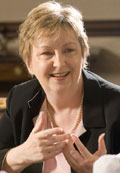 Alice H. Brink, ABC, APR, president of A Brink & Co., is an award-winning public relations professional with more than 25 years of corporate and consulting experience. She spent the first half of her career in major corporations including AT&T, The Coca-Cola Company, and Conoco Inc. She has been a consultant since 1997, first with a regional public relations agency, and now with an independent practice (www.abrinkandco.com) focused on energy and finance communications. Alice has received local, regional and national recognition for communications strategy, writing, and measurement work. She received the Jack Felton Golden Ruler Award in 2008 from the Institute of Public Relations and was one of the first to be designated a “Measurement Maven” by Katie Paine in The Measurement Standard.
Alice H. Brink, ABC, APR, president of A Brink & Co., is an award-winning public relations professional with more than 25 years of corporate and consulting experience. She spent the first half of her career in major corporations including AT&T, The Coca-Cola Company, and Conoco Inc. She has been a consultant since 1997, first with a regional public relations agency, and now with an independent practice (www.abrinkandco.com) focused on energy and finance communications. Alice has received local, regional and national recognition for communications strategy, writing, and measurement work. She received the Jack Felton Golden Ruler Award in 2008 from the Institute of Public Relations and was one of the first to be designated a “Measurement Maven” by Katie Paine in The Measurement Standard.
 Kami Watson Huyse, APR, partner and co-founder of Zoetica. She is the author of the blog Communication Overtones, where she writes on the topic of public relations and social media strategy. She is considered a national leader in the use of social media for public relations. She has spoken on the topic for the Social Media Club, the New Communications Forum, SxSW Interactive, the International Association of Business Communicators, the Arthur Page Foundation, the Public Relations Society of America, and many others. A 17-year-veteran of public relations, her work in social media has earned her the SNCR’s 2008 Reputation Management award and IABC’s 2009 Gold Quill of Excellence Award and the 2010 SNCR Excellence in New Communications Award. She was recognized for a Social Media award by the Austin-American Statesman and was named one of the 100 Most Powerful Women on Twitter by Twitter Grader. Additionally, she was named the Public Relations Professional of the Year by the Public Relations Association of America San Antonio. She also wrote a chapter on social media measurement in Geoff Livingston’s, “Welcome to the Fifth Estate: How to Create and Sustain a Winning Social Media Strategy.”
Kami Watson Huyse, APR, partner and co-founder of Zoetica. She is the author of the blog Communication Overtones, where she writes on the topic of public relations and social media strategy. She is considered a national leader in the use of social media for public relations. She has spoken on the topic for the Social Media Club, the New Communications Forum, SxSW Interactive, the International Association of Business Communicators, the Arthur Page Foundation, the Public Relations Society of America, and many others. A 17-year-veteran of public relations, her work in social media has earned her the SNCR’s 2008 Reputation Management award and IABC’s 2009 Gold Quill of Excellence Award and the 2010 SNCR Excellence in New Communications Award. She was recognized for a Social Media award by the Austin-American Statesman and was named one of the 100 Most Powerful Women on Twitter by Twitter Grader. Additionally, she was named the Public Relations Professional of the Year by the Public Relations Association of America San Antonio. She also wrote a chapter on social media measurement in Geoff Livingston’s, “Welcome to the Fifth Estate: How to Create and Sustain a Winning Social Media Strategy.”
The data is in!
- Diversity is a source of competitive advantage
- Diverse teams arrive at better, more innovative solutions than monolithic teams
- Diversity is not the same as affirmative action or any other government mandated equality program – it’s better
- Diversity makes common, moral and good business sense
You are a believer. Great.
But while your energy and enthusiasm on the topic of diversity are required, they are not sufficient. You need a rock solid communication plan and the know-how to execute it in order for diversity to take root and stay rooted in the fabric of how the company you work for does business.
What You Will Learn:
1. Explaining the business case
2. Reinforcing the values and visions of the diversity effort
3. Identifying the WIIFM (what’s in it for me) for employees
4. Defining diversity
5. Communicating expectations
6. Demonstrating ongoing commitment
Instructor:
 Jacqueline M. Welch is Vice President, Employee and Organizational Effectiveness for Rock-Tenn Company, a $2.2 billion Norcross, Georgia headquartered manufacturer of packaging products, merchandising displays and recycled paperboard. Rock-Tenn Company operates more than 90 facilities throughout the United States, Argentina, Canada, Mexico and Chile.
Jacqueline M. Welch is Vice President, Employee and Organizational Effectiveness for Rock-Tenn Company, a $2.2 billion Norcross, Georgia headquartered manufacturer of packaging products, merchandising displays and recycled paperboard. Rock-Tenn Company operates more than 90 facilities throughout the United States, Argentina, Canada, Mexico and Chile.
As Vice President of Employee and Organizational Effectiveness, Jacqui is responsible for talent acquisition, performance management, career development, learning and development, succession planning, organization development, employee relations, compliance, union relationships, corporate communications, and workplace practices such as corporate citizenship and diversity for a workforce of 10,000 employees. Jacqui reports directly to the CEO and is an officer of the company.
Jacqui’s expertise is in developing, implementing and institutionalizing people programs, practices and policies that support business objectives and optimize organizational culture. This includes developing customer-focused business strategy for the human resource function and building line capacity to manage the people asset.
Who should register:
- Communications, HR, public relations and managers and supervisors who want to help take their organization’s diversity program to the next level
Of course, the best way to manage a corporate crisis is to prevent it. But that’s another course.
In this class we are assuming, despite all the best crisis auditing and planning, something ugly has hit the fan, and all hell has broken loose, or so it may seem in those first few hours.
No matter how awful and mind-numbing the event, your job is to calmly slide into crisis mode and help your organization do and say the right things – promptly, compassionately and honestly. Those first 24 hours are critical because, now more than ever, your initial responses can sink or save your organization’s reputation and much more. Say the wrong things and your organization will be perceived as inept, at best, and criminally negligent, at worst. That’s why Communitelligence is producing this webinar with Jonathan Bernstein, noted crisis communication expert and author of the new book, Manager’s Guide to Crisis Management.
Attend and you’ll more fully grasp any situation that threatens your business, your career, and even lives. By mastering the most effective tactics, you’ll be able to lead through any crisis smoothly and with minimal ramifications.
What You Will Learn:
- The biggest mistakes in crises communications
- Preparing for the three types of crises
- When to initiate a crisis response and when to “Shut the hell up”
- What makes a good spokesperson
- The 5 tenets of crisis communications
- Messaging: the 3 C’s of crisis credibility
- The importance of holding statements
- How and when to speak directly to your stakeholders
- The forgotten stakeholders – internal communication
Presented by:
 Jonathan L. Bernstein, president of Bernstein Crisis Management, Inc. has more than 25 years of experience meeting clients’ needs in all aspects of crisis management – crisis response, vulnerability assessment, planning, training and simulations. Prior to launching his firm in January 1994, Bernstein created and served as the first director of the Crisis Communications Group for Ruder Finn, Inc., one of the world’s largest public relations agencies.
Jonathan L. Bernstein, president of Bernstein Crisis Management, Inc. has more than 25 years of experience meeting clients’ needs in all aspects of crisis management – crisis response, vulnerability assessment, planning, training and simulations. Prior to launching his firm in January 1994, Bernstein created and served as the first director of the Crisis Communications Group for Ruder Finn, Inc., one of the world’s largest public relations agencies.
Bernstein is publisher and editor of Crisis Manager, a first-of-its-kind email newsletter written for “those who are crisis managers whether they want to be or not,” currently read in 75 countries, and author of the most popular crisis management blog online. His commercially published Keeping the Wolves at Bay: Media Training has been as “an outstanding foundation for preparing individuals and organizations for effective crisis management.” His newest book, Manager’s Guide to Crisis Management (McGraw-Hill) was published in November 2011. Bernstein is frequently interviewed by national and international media outlets about various “crises du jour.” A PR Week feature story entitled “The Crunch-Time Counselors” identified Bernstein as one of 22 “people who should be on the speed dial in a crisis” and Business Week featured his perspectives in an article entitled “Masters of Disaster.”
Who Should Attend
- Crisis managers in corporate communications, public relations, corporate affairs, human resources, employee communications, media relations, and issues management.
In today’s dynamic marketplace, businesses simply cannot afford to leave strategy execution to chance. Organizations that succeed will be the ones that can effectively mobilize and engage their employees in implementing new business strategies to produce immediate value for customers. Making a solid case for the new business realities to employees is critical for any organization to survive and thrive. Employees who have seen change initiatives fail in the past are likely to avoid risks associated with change. They become roadblocks when communicating the new business realities to employees. Employees must buy into any business’ priorities to succeed.
What You Will Learn:
- The three biggest mistake companies make when communicating bad news
- Establishing and communicating performance expectations and accountability.
- Building trust with employee involvement.
- Establishing team norms for how work gets done.
- Modeling effective virtual behavior across boundaries with all stakeholders.
Who Should Attend
Individuals responsible for corporate communications, public relations, corporate affairs, human resources, employee communications, media relations, and issues management.
Presented by:
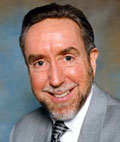 Dr. TJ Larkin and his business partner, Sandar, began Larkin Communication Consulting in 1985. The Larkins help large companies communicate major change to employees. Clients include: ABB, AT&T, Bank of America, Bankers Trust, Bell Labs, BHP Billiton, Boeing, BP, Caltex, DaimlerChrysler, ExxonMobil, GM, ICI, NASA, National Australia Bank, and PricewaterhouseCoopers. TJ and Sandar wrote the book, Communicating Change, now a McGraw-Hill Bookstore bestseller. Their paper, “Reaching and Changing Frontline Employees,” published in the Harvard Business Review has sold more than 40,000 reprints. The most recent papers by the Larkins can be downloaded, at no charge, from their Web site (Publications Page). TJ has a Ph.D. in communication from Michigan State University, and a B.Phil. in sociology from the University of Oxford.
Dr. TJ Larkin and his business partner, Sandar, began Larkin Communication Consulting in 1985. The Larkins help large companies communicate major change to employees. Clients include: ABB, AT&T, Bank of America, Bankers Trust, Bell Labs, BHP Billiton, Boeing, BP, Caltex, DaimlerChrysler, ExxonMobil, GM, ICI, NASA, National Australia Bank, and PricewaterhouseCoopers. TJ and Sandar wrote the book, Communicating Change, now a McGraw-Hill Bookstore bestseller. Their paper, “Reaching and Changing Frontline Employees,” published in the Harvard Business Review has sold more than 40,000 reprints. The most recent papers by the Larkins can be downloaded, at no charge, from their Web site (Publications Page). TJ has a Ph.D. in communication from Michigan State University, and a B.Phil. in sociology from the University of Oxford.
Mary Lou Dlugolenski, with nearly 20 years of experience, has established herself as a solid communications professional in roles spanning employee communication, public relations, marketing communication, change communication, and crisis management. She has worked in a number of industries including healthcare, manufacturing, engineering, advertising and financial services. Mary Lou has been with MassMutual for 18 months and serves as the company’s vice president of strategic enterprise communication. Recognizing employee communication as a critical business driver, Mary Lou and her team lead a strategy of employee engagement and culture change that creates dialogue between executives and employees
through well-orchestrated communication tactics. Prior to joining MassMutual, Mary Lou managed internal and external communication at various public companies, domestic and international, including Philips, GE, ADVO and
Alstom. Mary Lou lives in North Granby, Conn., with her husband and two children.
How to wrap a blog into your overall content and communications strategy
Corporate blogging means the use of company-sponsored blogs as a way to connect with internal and external audiences. Interactive, instant, efficient, often revelatory, corporate blogs are no longer optional. With the total number of blogs surpassing 55 million, we’ve entered the era of Corporate Blogging 2.0. You need to know now how can you can use this new communications channel. Organizations as various as Dell, General Motors and McDonald’s are using blogs to spread their message, learn from stakeholders and create a body of knowledge encapsulated in a digital trail.
What You Will Learn:
- Who should write your blog and what the topic should be
- Case studies on what works – and what doesn’t in a corporate blog
- Blogging guidelines and other nuts & bolts of managing an internal or external corporate blog
- How to measure results
- How to assess whether your organization is blog-ready
Presented by:
 Debbie Weil is a corporate and CEO blogging consultant and author of The Corporate Blogging Book (Penguin Portfolio 2006). She also writes BlogWriteForCEOs, considered one of the most influential blogs about business blogging.
Debbie Weil is a corporate and CEO blogging consultant and author of The Corporate Blogging Book (Penguin Portfolio 2006). She also writes BlogWriteForCEOs, considered one of the most influential blogs about business blogging.
As a consultant, she shows the big dogs how to use blogs as a next-generation marketing and communications strategy. She invites you to download Chapter 1 of her new book for a meaty introduction to the topic of CEO and corporate blogging.
Debbie has a unique background as a veteran journalist with an MBA and corporate marketing experience. She has worked as an Internet marketing consultant with startups as well as Fortune 500 companies (including HP and Wells Fargo) for over a decade.
She’s the publisher of award-winning WordBiz Report, an e-newsletter read by nearly 20,000 subscribers in 87 countries.
She has been quoted on the topic of corporate and CEO blogging in Fortune, the New York Times, BusinessWeek.com, the Washington Post and numerous other publications.
A graduate of Harvard with a degree in English, she has an MBA from Georgetown University and a Masters in Journalism from the University of Wisconsin. She is based in Washington DC.
http://www.debbieweil.com
http://www.BlogWriteForCEOs.com
http://www.TheCorporateBloggingBook.com
Launching a corporate blog takes more than an idea, it takes a plan. Successful business bloggers determine the needs of their audience, assess risks, get internal buy in and align the right resources for an ongoing dialogue with their customers. Get the tools you need to go from idea to action with two case studies from the pros. Learn how to scope a blogging project, get support for your initiative and manage a blog day to day.
What You Will Learn:
- Pros & risks of starting a blog for your organization
- Monitoring feedback & strategies for responding
- Strategies for including audio, video, photos
- Writing for authenticity and the right voice
- Managing multiple authors
- Policy dos & don’ts for employee bloggers
Questions that are answered:
-
What should be included in a blogging plan?
-
What resources will I need?
-
What tools are available?
-
How do I build internal support for a blog?
-
How do I measure success? Determine ROI?
-
What are the day to day best practices?
Presented by:
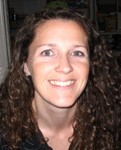 Nicki Dugan, senior director of corporate communications at Yahoo!, is editor of the company’s official corporate blog, Yodel Anecdotal. It launched in August 2006 as “Yet another self-serving corporate blog” with the mission of providing insights into the company, its people, its culture, and the things Yahoos think about in the shower. The blog covers emerging trends, behind-the-scenes commentary, employee profiles, user stories, guest opinions, and includes video, podcasts and photo essays. All this while attempting to faithfully avoid regurgitation of product press releases. Contributing voices range from CEO to summer interns and Yodel Anecdotal has been lauded for having the cahones to accept comments of all flavors.
Nicki Dugan, senior director of corporate communications at Yahoo!, is editor of the company’s official corporate blog, Yodel Anecdotal. It launched in August 2006 as “Yet another self-serving corporate blog” with the mission of providing insights into the company, its people, its culture, and the things Yahoos think about in the shower. The blog covers emerging trends, behind-the-scenes commentary, employee profiles, user stories, guest opinions, and includes video, podcasts and photo essays. All this while attempting to faithfully avoid regurgitation of product press releases. Contributing voices range from CEO to summer interns and Yodel Anecdotal has been lauded for having the cahones to accept comments of all flavors.
Prior to joining Yahoo! in 2000, Nicki represented consumer internet brands such as Yahoo!, Mapquest and Reel.com at Niehaus Ryan Wong, the tech-only agency that presided over the halcyon days of the Internet boom (and may it rest in peace). She also served as editorial director at Sheila Donnelly & Associates of Honolulu and as senior editor at Travel Holiday magazine. Nicki received a B.A. in English from Franklin & Marshall College.
 About Paula Berg
About Paula Berg
Paula Berg is a spokesperson and Public Relations Specialist for Southwest Airlines, the nation’s leading low-fare carrier and the largest domestic airline in terms of Customers carried. In addition to handling the company’s corporate blog, Nuts About Southwest Blog, Paula specializes in strategic communication, regional media relations, reputation management, and special event planning. Paula also supervised on-location production for three seasons of Airline!, Southwest’s reality series for the A&E Television Network, which filmed Southwest’s daily operations in four cities. After brief stints selling beer on Phish tour and working for the Colorado and United States Senates, Paula woke up and smelled the jet fuel and began her career at Southwest Airlines in 2001. Paula is a graduate of the University of Colorado at Boulder where she earned a bachelors degree in communication and a minor in Political Science.
 About Brian Glover
About Brian Glover
As senior manager of market strategy for Biz360, Brian Glover is responsible for activities that support the company’s product direction and marketing communications efforts. He is the primary author of the company’s MarketIQ blog and has eight years of experience in marketing and public relations. Prior to Biz360, Brian was public relations manager for Documentum, acquired by EMC in 2003, and a Biz360 client. He has a Bachelor of Arts degree in Rhetoric from the University of California at Berkeley.
We’ve all heard the news: Forget flash (or even Flash). To attract and hold prospects to your website, you need content that meets the needs, values and expectations of your market. Great content draws visitors, attracts links, and builds your organization’s reputation for service and expertise. In short, content is king. But where will your content come from? How will you find it? How will you shape it? And how will you write it for maximum impact — and search engine visibility? Crafting Killer Web Content will show you how.
Learning Topics
In one convenient, 75-minute crash course, you will acquire the practical skills you need to:
- Uncover the hidden know-how within your organization
- Solicit cooperation from the crucial product and service people closest to your customers
- Create keyword-saturated Web glossaries in mere hours
- Select the best content options for your pages
- Craft effective, traffic-building blogs
- Incorporate keyword strategies into your writing
- Develop compelling case studies you can use on your website, collateral packages, press kits and more
Other value adds:
- Debunking the myth about writing long
- Why word-specificity is your friend
- Why testimonials and where they should go
- How to write skimmable sub-heads that tell the story
- Guarantees that guarantee believability
- What readers expect from marketing blog
Instructor:
 Jonathan Kranz is the author of Writing Copy for Dummies and a marketing/PR writer serving consumer and B2B clients in high-tech, healthcare, banking, insurance, education, financial services and other industries. His clients include Boston Private Bank & Trust, Dell Computers, IBM, Liberty Mutual, Pitney Bowes and many others. He is a regular contributor to leading marketing publications such as MarketingProfs.com, RainToday.com, DIRECT magazine, DM News and the Harvard Management Communications Letter. Jonathan has taught writing courses at Harvard University Extension School, Emerson College and Northeastern University, and offers in-house marketing writing seminars to corporate clients.
Jonathan Kranz is the author of Writing Copy for Dummies and a marketing/PR writer serving consumer and B2B clients in high-tech, healthcare, banking, insurance, education, financial services and other industries. His clients include Boston Private Bank & Trust, Dell Computers, IBM, Liberty Mutual, Pitney Bowes and many others. He is a regular contributor to leading marketing publications such as MarketingProfs.com, RainToday.com, DIRECT magazine, DM News and the Harvard Management Communications Letter. Jonathan has taught writing courses at Harvard University Extension School, Emerson College and Northeastern University, and offers in-house marketing writing seminars to corporate clients.
Times have changed. In today’s world, communication moves at the speed of light. People want information, and they want it now. On top of that, they want it in more creative formats than before, thanks to the social media tools taking the world by storm. And your employees are no different.
In this webinar, you will hear from two internationally recognized companies – Monsanto and Sprint – that have taken major steps recently to meet employee expectations with major initiatives to improve their employee communication strategies, tactics and tools.
Katie Sauer from Monsanto will talk about the evolution during the past two years since they launched a complete overhaul of the company’s employee communications. Specifically, she will describe Monsanto’s online news publication and why it is now regarded as a best practice in the profession.
She will explore a number of provocative questions.
- Are your employee news publication and intranet meeting their needs?
- Are you giving them honest facts or corporate-speak?
- Are you sending them weekly or monthly publications, or are you giving them up-to-the minute information?
- Are you communicating things your way or their way?
Jennifer Sniderman from Sprint will talk about how the company decided to seize unprecedented opportunity to build on their efforts to revolutionize the customer experience and use the same approach to facilitate conversations among employees and help surface the “why” behind key decisions. By blurring the lines between Sprint Space (internal social media platform) and i-Connect (the company-wide intranet) Sprint continues to drive authenticity and engage key employee influencers.
In this presentation you will learn how Sprint’s News 2.0 strategy is:
- Activating our brand from the inside out, by making employees active participants in revolutionizing the customer experience; tapping collective wisdom, acting on what we learn
- Spreading optimism at new speeds
- Driving confidence in leadership at all levels
- Decreasing communications clutter and reaching employees in ways they’ve embraced outside of work
Both of these remarkable case studies underscore the need for a plan that allows you to communicate with your employees—and vice versa—in the honest, simple and fast way they expect. At this webinar, you will learn how to create an online communication mechanism that will become an integral part or your employees’ lives.
What You Will Learn:
- How to write and produce stuff your employees will want to read—and trust
- How to integrate social media tools into your employee communication strategy
- How to get legal and management backing you
- How to use your intranet publication to change your company’s culture
Presented by:
 Katie Sauer is a communications manager for Monsanto, where she is responsible for writing content for both the company’s employee news site and corporate Web site. She has worked for Monsanto since earning her bachelor’s in communication from Truman State University in Missouri. She worked in sales and marketing for Monsanto before moving to public affairs in 2006.
Katie Sauer is a communications manager for Monsanto, where she is responsible for writing content for both the company’s employee news site and corporate Web site. She has worked for Monsanto since earning her bachelor’s in communication from Truman State University in Missouri. She worked in sales and marketing for Monsanto before moving to public affairs in 2006.
 Jennifer Sniderman oversees employee communications channels and editorial including Sprint’s corporate Intranet and Sprint’s social media platform. She is responsible for developing the news strategy and messaging architecture for enterprise employee communications.Jennifer leads the team responsible for Sprint’s IABC Gold Quill award-winning leadership communications program and is the managing editor of i-Lead, Sprint’s bi-weekly online newsletter. Jennifer is also the executive producer/writer of a recurring talk-show broadcast to the desktop of Sprint managers nationwide. In her role at Sprint, Jennifer has developed numerous multimedia campaigns and interactive communications solutions. She is currently working on Sprint’s social media strategy for employee communications and enhancements to Sprint’s integrated online leadership community.
Jennifer Sniderman oversees employee communications channels and editorial including Sprint’s corporate Intranet and Sprint’s social media platform. She is responsible for developing the news strategy and messaging architecture for enterprise employee communications.Jennifer leads the team responsible for Sprint’s IABC Gold Quill award-winning leadership communications program and is the managing editor of i-Lead, Sprint’s bi-weekly online newsletter. Jennifer is also the executive producer/writer of a recurring talk-show broadcast to the desktop of Sprint managers nationwide. In her role at Sprint, Jennifer has developed numerous multimedia campaigns and interactive communications solutions. She is currently working on Sprint’s social media strategy for employee communications and enhancements to Sprint’s integrated online leadership community.
 Les Landes is President of Landes & Associates. His firm provides services in the areas of planning, marketing, public relations, organizational communications, team development, and quality improvement systems. Prior to starting his own firm, Les worked with Pet Incorporated where he served for 10 years as the company’s Director of Communications with responsibilities for corporate advertising, employee communication, public and media relations, consumer affairs, and creative services. He also played a major role in developing and implementing Pet’s quality management system.
Les Landes is President of Landes & Associates. His firm provides services in the areas of planning, marketing, public relations, organizational communications, team development, and quality improvement systems. Prior to starting his own firm, Les worked with Pet Incorporated where he served for 10 years as the company’s Director of Communications with responsibilities for corporate advertising, employee communication, public and media relations, consumer affairs, and creative services. He also played a major role in developing and implementing Pet’s quality management system.
“This is exactly the kind of specific, here’s how we did it, replicable information (that is often difficult to find) that we were looking for. Really great stuff. We got a lot of ideas and also confirmed that in many ways, we are on the right track as well.”
“Real-life examples of the inner workings of two companies’ intranets. Informative speakers. Good tips.”
Learn the necessary components of a crisis preparedness plan and how to effectively communicate it.
Terrorism, natural disasters and human errors observe few rules, and your company may be hit without any warning whatsoever. How badly your business is disrupted — and how much public trust and confidence remain with the company — will depend on how prepared you and your senior managers are when it comes to crisis communications.
Is your company prepared for a crisis? Does your company’s existing crisis policies allow for the smooth running of operations and communications in the event that something goes wrong? This session explores what communicators must do to help their companies survive the worst.
What You Will Learn:
- Crisis assessment or audit
- Writing the crisis plan and key messages
- The elements of a sound crisis communication plan
- Case study: Hurricane Katrina
- Crisis drill
- Emergency preparedness and response
- Crisis communications leadership
- Steps you should take
- Selling the need for crisis communications planning
- Crisis planning for operations abroad
After reviewing this webinar, you will have:
- A better understanding of the necessary dynamics of a crisis preparedness plan and how it can help your business survive the most difficult of times
- The necessary components of a crisis preparedness plan and how to it can be communicated effectively across the company
- the know how to execute your communication program if the power goes out
- The know how to write key messages that will withstand a crisis
- Understanding how the news media will respond to a crisis situation
- What it takes to take control of the situation and avoid unnecessary escalation by the media
- What you, as a communicator, can do to help the organization resume normal operations – ASAP!
Instructor:
 Gerard Braud cut his teeth in the crisis arena as a front-line journalist for 15 years, covering events that included one of the nation’s deadliest train derailments, one of the worst federal prison riots and some of the country’s worst industrial accidents and natural disasters. As the head of Braud Communications, he has created proven methods to help organizations communicate with the media, employees and other stakeholders during a crisis. After the events of September 11, 2001, Gerard was commissioned to write the crisis communications plan for the Internal Revenue Service and its 800 offices across the U.S. A native of Louisiana, Gerard prepared a crisis communication plan for the City of New Orleans in 2002 that was rejected due to lack of funding.
Gerard Braud cut his teeth in the crisis arena as a front-line journalist for 15 years, covering events that included one of the nation’s deadliest train derailments, one of the worst federal prison riots and some of the country’s worst industrial accidents and natural disasters. As the head of Braud Communications, he has created proven methods to help organizations communicate with the media, employees and other stakeholders during a crisis. After the events of September 11, 2001, Gerard was commissioned to write the crisis communications plan for the Internal Revenue Service and its 800 offices across the U.S. A native of Louisiana, Gerard prepared a crisis communication plan for the City of New Orleans in 2002 that was rejected due to lack of funding.
 Brenda Siler has 30 years of experience in leading communication programs in a variety of U.S.-based nonprofits and associations, including the American Speech-Language-Hearing Association, the American Red Cross, United Way and AARP. She is a past chairwoman of IABC. While serving as the director of external communications at the American Red Cross, Brenda developed a crisis communications plan for the its Metro Atlanta Chapter, which was used for a threatened nurses strike, local/regional disasters and queries about HIV and the safety of the blood supply. She also coordinated communications efforts for United Way’s role in the Atlanta “Missing and Murdered Children” crisis, including managing pro bono services of local advertising and PR agencies. Based in Silver Spring, Md., Brenda is certified by the American Red Cross in disaster public relations management.
Brenda Siler has 30 years of experience in leading communication programs in a variety of U.S.-based nonprofits and associations, including the American Speech-Language-Hearing Association, the American Red Cross, United Way and AARP. She is a past chairwoman of IABC. While serving as the director of external communications at the American Red Cross, Brenda developed a crisis communications plan for the its Metro Atlanta Chapter, which was used for a threatened nurses strike, local/regional disasters and queries about HIV and the safety of the blood supply. She also coordinated communications efforts for United Way’s role in the Atlanta “Missing and Murdered Children” crisis, including managing pro bono services of local advertising and PR agencies. Based in Silver Spring, Md., Brenda is certified by the American Red Cross in disaster public relations management.
 Joseph Honick is president of GMA International Ltd. Since 1975, his consulting firm has assisted organizations, nonprofit associations and major educational institutions with crisis management and communication efforts. His firm also works to broaden business opportunities abroad for major U.S. corporations. His firm is based Tucson, Ariz.
Joseph Honick is president of GMA International Ltd. Since 1975, his consulting firm has assisted organizations, nonprofit associations and major educational institutions with crisis management and communication efforts. His firm also works to broaden business opportunities abroad for major U.S. corporations. His firm is based Tucson, Ariz.
The problem is how to get your organization’s top executives out in front of as many employees as possible and provide a genuine communication exchange. The solution, for the past 100 years or so, is what we now call the “town hall” meeting, even though companies are not towns, and hardly ever do they occur in halls.
For employees and top executives, town hall meetings can be the best of times, or the worst of times, depending on how they’re handled. This webinar will surface some tried and true ways to create a mass employee meeting that allows a genuine exchange of ideas, issues, concerns and opportunities. You’ll also get a good list of what you absolutely should not do when you plan and produce your next town hall meeting.
What You Will Learn:
- Checklist on planning an effective series of town hall meetings
- Best practices on prepping your executives
- Techniques to break the ice and make the meetings fun and anything but boring
- Planning for tough questions and awkward moments
- Crucial tasks after the event
- Tips and techniques on using the newest technology to simultaneous global town-hall meetings
Presented by:
 Les Landes is President of Landes & Associates. His firm provides services in the areas of planning, marketing, public relations, organizational communications, team development, and quality improvement systems. Prior to starting his own firm, Les worked with Pet Incorporated where he served for 10 years as the company’s Director of Communications with responsibilities for corporate advertising, employee communication, public and media relations, consumer affairs, and creative services. He also played a major role in developing and implementing Pet’s quality management system.
Les Landes is President of Landes & Associates. His firm provides services in the areas of planning, marketing, public relations, organizational communications, team development, and quality improvement systems. Prior to starting his own firm, Les worked with Pet Incorporated where he served for 10 years as the company’s Director of Communications with responsibilities for corporate advertising, employee communication, public and media relations, consumer affairs, and creative services. He also played a major role in developing and implementing Pet’s quality management system.
 Veronica Apostolico is Director, Internal Communication, Global Operations, for Smith & Nephew. Veronica has 18-plus years in the communications field and has worked across all communications disciplines, internal and external, but has focused mainly on internal (change management, leadership coaching, crisis comms, employee comms). She has held communications positions with Warner-Lambert (now Pfizer), Ciba-Geigy (now Novartis – part of the team that led communications during the merger), Knoll Pharma (now Abbott) and RTI International. Veronica has also had her own communications consultancy for 5 years with clients including Aventis, Merck and J&J.
Veronica Apostolico is Director, Internal Communication, Global Operations, for Smith & Nephew. Veronica has 18-plus years in the communications field and has worked across all communications disciplines, internal and external, but has focused mainly on internal (change management, leadership coaching, crisis comms, employee comms). She has held communications positions with Warner-Lambert (now Pfizer), Ciba-Geigy (now Novartis – part of the team that led communications during the merger), Knoll Pharma (now Abbott) and RTI International. Veronica has also had her own communications consultancy for 5 years with clients including Aventis, Merck and J&J.
Brands are living and dying on the 10-20 sites that come up in a Google search for your company, product, or executive names. This webinar will address two critical aspects of your brand’s dance with Google:
- Proactively — How do you create and place the type of content that will greatly improve the chances that you will be found on Google.
- Reactively — How do you react and manage issues that arise and sneak into your top Google results.
What You Will Learn:
- How everyone from celebrities to Fortune 500 companies are treating their “Google Homepage” as the key to their online reputation
- How top online players are combining search engine optimization (SEO) with social media to own all ten of their first page Google results
- Why PR is the right business unit to own search engine reputation management
- Simple tools to monitor your reputation through search engines
Presented by:
 Paul Dyer is eMedia Director of WeissComm Group where he oversees social and new media programming for the firm’s healthcare and consumer brands. Paul’s experience includes leading social media and search engine strategy for a broad range of significant and Fortune 500 brands. Having built and managed his own web property to acquisition in 2003, Paul is adept at creating top to bottom web campaigns that incorporate SEO, social media, web development, media placements, and interactive assets. Paul’s current and former clients have included Virgin Megastore, IBM, Symantec, Coors Brewing, New Balance, Hansen’s Soda, Macanudo Cigars, Nature Made Vitamins, and Elan Pharmaceuticals. Paul is a frequent speaker on social media and SEO and authors the popular industry blog, Dyer Situations.
Paul Dyer is eMedia Director of WeissComm Group where he oversees social and new media programming for the firm’s healthcare and consumer brands. Paul’s experience includes leading social media and search engine strategy for a broad range of significant and Fortune 500 brands. Having built and managed his own web property to acquisition in 2003, Paul is adept at creating top to bottom web campaigns that incorporate SEO, social media, web development, media placements, and interactive assets. Paul’s current and former clients have included Virgin Megastore, IBM, Symantec, Coors Brewing, New Balance, Hansen’s Soda, Macanudo Cigars, Nature Made Vitamins, and Elan Pharmaceuticals. Paul is a frequent speaker on social media and SEO and authors the popular industry blog, Dyer Situations.
 Sam Michelson is CEO of RepRelations. Sam’s first foray into Reputation Management came over 5 years ago when dealing with his company’s own reputation management crisis. Realizing there were no tools available to handle Reputation Management crises, he set out to develop a unique PR-based methodology, which is still the basis for the company’s RepRelations service offering. Prior to launching RepRelations, Sam created several online businesses, YouNeverCall (a leading cell phone website) CondominiumCentral (a licensed online luxury condos broker) and Five Blocks (a Search Engine Optimization firm). Sam is the inventor of two US Patents – one in text categorization, the other in interactive advertising. Sam holds a BA in Psychology from Yeshiva University and a Masters of Science in Management from Boston University.
Sam Michelson is CEO of RepRelations. Sam’s first foray into Reputation Management came over 5 years ago when dealing with his company’s own reputation management crisis. Realizing there were no tools available to handle Reputation Management crises, he set out to develop a unique PR-based methodology, which is still the basis for the company’s RepRelations service offering. Prior to launching RepRelations, Sam created several online businesses, YouNeverCall (a leading cell phone website) CondominiumCentral (a licensed online luxury condos broker) and Five Blocks (a Search Engine Optimization firm). Sam is the inventor of two US Patents – one in text categorization, the other in interactive advertising. Sam holds a BA in Psychology from Yeshiva University and a Masters of Science in Management from Boston University.
 Shana Costarella is Communications Manager, Community & Social Media at PetSmart in Phoenix, Arizona. PetSmart, Inc. is the largest specialty retailer of services and solutions for the lifetime needs of pets. Shana ushered PetSmart into the strategic use of emerging media for crisis/issue communication, reputation management and brand awareness. She oversees social media community and online reputation approaches for the retailer’s PR and marketing initiatives. In addition, she counsels business units on social media strategies for listening and engagement to achieve key customer service, recruiting, associate relations, loss prevention and philanthropy objectives. With more than a dozen years experience in marketing communications, Shana has spent the last 10 years honing and employing Web and web-based solutions to illuminate and involve audiences. In 2005, she joined PetSmart’s Corporate Communications department, responsible for developing and managing web-based communications projects for internal and external audiences. Shana holds a Bachelor of Arts degree in English from Ottawa University.
Shana Costarella is Communications Manager, Community & Social Media at PetSmart in Phoenix, Arizona. PetSmart, Inc. is the largest specialty retailer of services and solutions for the lifetime needs of pets. Shana ushered PetSmart into the strategic use of emerging media for crisis/issue communication, reputation management and brand awareness. She oversees social media community and online reputation approaches for the retailer’s PR and marketing initiatives. In addition, she counsels business units on social media strategies for listening and engagement to achieve key customer service, recruiting, associate relations, loss prevention and philanthropy objectives. With more than a dozen years experience in marketing communications, Shana has spent the last 10 years honing and employing Web and web-based solutions to illuminate and involve audiences. In 2005, she joined PetSmart’s Corporate Communications department, responsible for developing and managing web-based communications projects for internal and external audiences. Shana holds a Bachelor of Arts degree in English from Ottawa University.
There’s too much silliness, noise, and crap coming at you, and you want a shut-off valve. You want to make more of a difference, working on only what truly matters. Right?
There’s too much information to manage and too many key messages for people to focus on, right?
Then you don’t want to miss this teleseminar! Best-selling author Bill Jensen will share tips, tools, and practices from two of his most recent books, The Simplicity Survival Handbook: 32 Ways to Do Less and Accomplish More and What Is Your Life’s Work? And he’ll tailor all those tips for communicators trying to break through the clutter and get their messages heard and acted upon.
What You Will Learn:
- Practical tips for doing less because you’re working smarter.
- Tips for educating your teammates and senior executive clients.
- Feeling jazzed that you have a lot more control over morebetterfaster than you thought you did!
Real World Questions That Will be Answered:
- Do your 3×5 rules apply to letters sent by mail?
- On the Communitelligence Communication Leadership blog, you and Bill Boyd have been really banging heads over the issue of whose the culprit in the information overload problem. You are really charging a big part of the problem to communicators. What are the biggest mistakes you think communicators are making?
- How long should an e-newsletter be, and any advice on format?
- OK Bill, it’s easy to say do less of what doesn’t really matter, but how do I actually decide what are those things?
- How do you feel about email where the message is entirely in the subject line?
Practical Advice For:
- Dealing with bosses and who just don’t get it.
- Deleting 75% of your emails.
- Composing emails, messages and deliverables that won’t get deleted!
- Getting more out of fewer meetings.
- Doing less to get the budgets you need and much more.
Testimonial:
- “Relevant topic; simple presentation of concepts; actionable tips and tools; down-to-earth presentation style (“one of us”)”
- “I already sent an e-mail this afternoon with the improved subject line format! Makes great sense. Excellent seminar all around — Look forward to more in the future.”
Instructor:
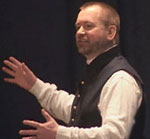 Harvard Business Review , CNBC and Fast Company have called Bill Jensen today’s foremost expert on work complexity and cutting through clutter to what really matters. The Conference Board designed an entire conference around his work.He has spent the past decade studying business’s ability to design work. (Much of what he has found horrifies him.)
Harvard Business Review , CNBC and Fast Company have called Bill Jensen today’s foremost expert on work complexity and cutting through clutter to what really matters. The Conference Board designed an entire conference around his work.He has spent the past decade studying business’s ability to design work. (Much of what he has found horrifies him.)
He is an internationally-acclaimed author and speaker who is known for provocative ideas, extremely useful content, and his passion for making it easier for managers and employees to work smarter and accomplish extraordinary feats.
The common thread in every Jensen presentation is that your biggest competition is not “out there” — in today’s cluttered and morebetterfaster business environments, you are competing for everyone’s time and attention!
His first book, Simplicity, has been hailed as a “breakthrough in the design of communication and understanding,” and was the Number 5 Leadership/Management book on Amazon in 2000. His next best-sellers were Work 2.0, and Simplicity Survival Handbook: 32 Ways to Do Less and Accomplish More.
His latest book, What is Your Life’s Work?, captures the intimate exchanges between mothers and daughters, fathers and sons, and caring teammates, all talking about what matters at work, and in life.
Bill has over 25 years of experience in communication and change consulting. He holds degrees in Communication Design and Organizational Development. He’s CEO of The Jensen Group, whose mission is: To make it easier to get stuff done. Among the Jensen Group’s clients are Bank of America, Merck, Pfizer, Duracell, NASA, The Royal Bank, The World Bank, Walt Disney World, American Express, the US Navy SEALS, the government of Ontario, Singapore Institute of Management, Guangzhou China Development District, and the Swedish Post Office.
Bill’s personal life fantasy is to bicycle around the globe via breweries.
How to grow the leadership capacity of your team to meet changing corporate demands
Learn how to cultivate the leadership potential of your staff and in the process become a better leader yourself.
So much to do, so little time. It’s a common complaint of communication managers everywhere. Demands increase while resources dwindle, and we find our value compromised by perpetual busyness.
How to solve this dilemma? The answer lies in leveraging the power of the people who work with you everyday. By developing the leadership abilities of your staff, you bring greater meaning and satisfaction to the work they do and increase the performance of your team and yourself exponentially.
In this seminar, you’ll learn how traditional management approaches limit the effectiveness of your staff and your potential as a leader. Elise discusses current research on the forces of change that make leadership a job for everyone and how you can appeal to the leadership potential of your employees, regardless of their particular areas of strength.
She also looks at some tools and processes you can start using immediately to create an environment of learning and leadership within your team, including your own personal leadership assessment and learning plan for change.
Learning topics:
- How the complexity of today’s business environment requires a new leadership approach by communicators
- The core competencies required for leadership in the practice of communication
- Discovering what motivates staff to excel
- Creating a learning organization within your own team
- Mapping out a learning plan to increase your team’s leadership capacity
- Making the transition from “doing” to “leading”
How-to Handouts in This CD:
- DOING MORE WITH MORE – 17 slides
- Leadership Interviews Exercise
- Core Competencies for Communication Leadership – Personal Checklist
- Core Competencies for Communication Leadership – Personal Learning Plan
Elise answers real-world questions on:
- How to choose the right leadership competencies for developing your staff
- How to balance the disciplines of managing and leading
- How to find the time to develop you staff when you have so many other things to do
- How to make leaders of staff who would rather be followers
- The best tools and channels to communicate with your team about leadership visions, competencies
- Five areas of leadership ability
- Why communicators tend to be too shy about stepping up to the plate as leaders – and how to over come this
- Recommendations on courses or training to advance your communication leadership skills
- Why communicators may be looked over or taken for granted by the executive leadership of organizations
- Common traits of leadership “heroes”
Who should purchase:
- Business leaders
- Corporate Communications
- Marketing
- Advertising
- Internal Communications
- Public Affairs
- Public Relations
- Organizational Development
- Human Resources
- Corporate Strategy and Development
- Senior Management
- College/university libraries and bookstores
Instructor:
 Elise Roaf, MBA, ABC, MC, CHRPhas more than 20 years of experience as a communications professional and consultant in the private and public sector and with nonprofit organizations. Her areas of expertise include strategic communication, change management and organizational development. She has developed curricula, taught courses and facilitated workshops in university and corporate settings and is currently a sessional instructor in organizational communications at Kwantlen University College.
Elise Roaf, MBA, ABC, MC, CHRPhas more than 20 years of experience as a communications professional and consultant in the private and public sector and with nonprofit organizations. Her areas of expertise include strategic communication, change management and organizational development. She has developed curricula, taught courses and facilitated workshops in university and corporate settings and is currently a sessional instructor in organizational communications at Kwantlen University College.
Elise holds a Master of Business Administration specializing in Human Resources Management from Royal Roads University, a Bachelor of Arts from the University of Western Ontario, and a Certificate in Public Relations from the University of Regina.
Her professional designations include an Accredited Business Communicator and a Certified Human Resources Professional. She has received numerous awards for excellence in business communication. Among them are the Master Communicator Award, the highest honor awarded to a Canadian member of the International Association of Business Communicators, and the IABC Chairman’s Award for contributions to the association and the profession as a whole.
Reduce waste, cut costs and reduce environmental impact, increase employee engagement and retention, bolster your brand … what’s not to like about infusing green and sustainability into your organization?
And so it is no wonder that companies, large and small across all industries, are launching and supporting employee green teams to add arms and legs to green and responsibility goals. But, as this webinar underscores, green teams and social innovation do not just sprout and blossom without coordination, recognition, communications and a basket full of other good practices.
Whether you are just thinking about launching an employee green team, or you would like to ratchet yours up to the next level, learn the latest strategies from our three experts with a wealth of what works, and what doesn’t.
What You Will Learn:
- Building and communicating the business case for green teams
- How to grow green teams without dampening the grass-roots passion that they started with
- Big picture overview of some best practices from other leading companies, including Bloomberg, EMC, Ingersol Rand and Genentech
- How to create unique recognition and training programs (specific to your corporate culture)
- How to connect green teams to customers and communities
- What are some pitfalls to watch out for?
- How should you measure success?
Learn how the eBay Green Team, started by a small group of employees, has grown to more than 2,400 eBay employeees in 23 countries and 225,000 eBay buyers and sellers. The program was awarded “Best Employee Engagement Strategy” by the 2010 Social Innovation Awards.
Presenters:
 Krista Van Tassel: As the newest member of the Wells Fargo Environmental Affairs team, Krista supports our many Green Teams, who promote environmental innovation and educate team members about their role in supporting our sustainability efforts. Before coming to Wells Fargo, Krista earned her MBA in International Business at Georgetown University. She’s also worked in a variety of sustainability and marketing positions in both the nonprofit (Net Impact) and for-profit (Sun Microsystems) worlds, and served as the Cupertino Campus Chair for Hewlett-Packard’s 2002 Charitable Giving Campaign. In her oh-so precious free time, she enjoys running, reading and volunteering.
Krista Van Tassel: As the newest member of the Wells Fargo Environmental Affairs team, Krista supports our many Green Teams, who promote environmental innovation and educate team members about their role in supporting our sustainability efforts. Before coming to Wells Fargo, Krista earned her MBA in International Business at Georgetown University. She’s also worked in a variety of sustainability and marketing positions in both the nonprofit (Net Impact) and for-profit (Sun Microsystems) worlds, and served as the Cupertino Campus Chair for Hewlett-Packard’s 2002 Charitable Giving Campaign. In her oh-so precious free time, she enjoys running, reading and volunteering.
 JD Norton has been with eBay for ten years and spent most of that time not only making it a great place to work for eBay employees, but also making sure eBay is a good corporate citizen in the communities in which they operate. He is currently heads Community Engagement for the eBay Green Team, where he leads a global employee Green Team of over 2500 employees spread out across 25+ office locations worldwide, as well as 300,000+ eBay community members who have also taken the green pledge.
JD Norton has been with eBay for ten years and spent most of that time not only making it a great place to work for eBay employees, but also making sure eBay is a good corporate citizen in the communities in which they operate. He is currently heads Community Engagement for the eBay Green Team, where he leads a global employee Green Team of over 2500 employees spread out across 25+ office locations worldwide, as well as 300,000+ eBay community members who have also taken the green pledge.
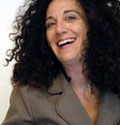 Deborah Fleischer is President of Green Impact, a strategic sustainability consulting practice that helps socially responsible companies and NGOs transform a commitment to sustainability into action. She is a LEED AP with over 20-years of direct experience working with businesses, governmental agencies and non-profits on environmental and sustainability challenges. Her expertise focuses on strategy, engagement and communications. She is the author of Green Teams: Engaging Employees in Sustainability and is a regular contributor to GreenBiz.com, where she has blogged extensively on best practices for engaging employees. Her recent clients include the University of California San Francisco, Plantronics, Business Social Compliance Initiative (BSCI), Sonoma Open Space District and the Sonoma Land Trust. You can follow her occasional tweets at @GreenImpact, join her Facebook page or check out her blog Shades of Green.
Deborah Fleischer is President of Green Impact, a strategic sustainability consulting practice that helps socially responsible companies and NGOs transform a commitment to sustainability into action. She is a LEED AP with over 20-years of direct experience working with businesses, governmental agencies and non-profits on environmental and sustainability challenges. Her expertise focuses on strategy, engagement and communications. She is the author of Green Teams: Engaging Employees in Sustainability and is a regular contributor to GreenBiz.com, where she has blogged extensively on best practices for engaging employees. Her recent clients include the University of California San Francisco, Plantronics, Business Social Compliance Initiative (BSCI), Sonoma Open Space District and the Sonoma Land Trust. You can follow her occasional tweets at @GreenImpact, join her Facebook page or check out her blog Shades of Green.
“Good ideas for reinvigorating our team and expanding our reach internally and externally.” … Webinar testimonial
If you are like most communicators, you know that text alone is just not enough—today’s employees not only want to see their leaders on video, but want to be seen themselves. YouTube, Vimeo and FaceTime are teaching your employees how powerful video is, and learning about video in their non-work life makes them want to do more with it at work.
Creating meaningful business communications is not the same as recording cute dog tricks. Your employees need to know what works, and what doesn’t. And more importantly, you and your company need to be ready for: increased demand on your IT networks; the need to put policies and procedures in place and the importance of providing training to help them get it right.
In this series you will hear top practitioners talk about how they’ve put a new generation of digital video tools to work in their organization to inspire, lead and train employees; to cultivate employee engagement by putting the right tools in the hands of employees themselves; and to integrate external and internal communications for the kind of results one can only get with truly aligned communications. We’ve found practioners from leading companies to share specifics on what works across categories including internal communications, marketing, PR, social media and human resources.
What You Will Learn:
- How leading companies use employee created video: when, where, and how
- What the IT and regulatory issues are that you need to be most concerned about
- How leaders train and manage employees who are contributing video
- How video can be better integrated with intranets and social media
- The three most important things to AVOID with employee generated content.
- AND most importantly, what kinds of good results happen when you get it right.
Presented by:
 Ronna Lichtenberg is co-founder and CEO, Videotrope. Prior to her entrepreneurial career, Ronna had a long-tenured career contributing to strategic planning and marketing initiatives at Prudential and Prudential Securities. During her tenure, she was the first woman named to Prudential Securities Operating Council. As a superior communicator and strategic consultant, Ronna’s experience incorporates wide-ranging personal experience as a communicator, including former contributing editor of “O”, the Oprah magazine and regular appearances as a workplace expert on national TV. She has published three books in ten languages (to rave reviews) and has a decade of experience as a keynote speaker with Fortune 500 companies and helping small to large businesses successfully execute business development imperatives and strategic initiatives.
Ronna Lichtenberg is co-founder and CEO, Videotrope. Prior to her entrepreneurial career, Ronna had a long-tenured career contributing to strategic planning and marketing initiatives at Prudential and Prudential Securities. During her tenure, she was the first woman named to Prudential Securities Operating Council. As a superior communicator and strategic consultant, Ronna’s experience incorporates wide-ranging personal experience as a communicator, including former contributing editor of “O”, the Oprah magazine and regular appearances as a workplace expert on national TV. She has published three books in ten languages (to rave reviews) and has a decade of experience as a keynote speaker with Fortune 500 companies and helping small to large businesses successfully execute business development imperatives and strategic initiatives.
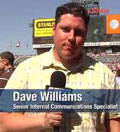 Dave Williams has been working at ESPN since 2000. Prior to joining the corporate communication team he worked with ESPN’s production operations team on all of ESPN’s studio shows including SportsCenter, Sunday NFL Countdown, and Baseball Tonight. As a senior internal communication specialist, Williams brings his vast videography, digital editing, writing, and production experience to the internal communication team. He ensures that the multi-media aspects of the organization’s internal communication strategy are of the same high-quality production techniques that ESPN employees are accustomed to seeing on their external programming.
Dave Williams has been working at ESPN since 2000. Prior to joining the corporate communication team he worked with ESPN’s production operations team on all of ESPN’s studio shows including SportsCenter, Sunday NFL Countdown, and Baseball Tonight. As a senior internal communication specialist, Williams brings his vast videography, digital editing, writing, and production experience to the internal communication team. He ensures that the multi-media aspects of the organization’s internal communication strategy are of the same high-quality production techniques that ESPN employees are accustomed to seeing on their external programming.
 Deirdré Straughan is a Technical Content specialist for Solaris Product Management at Oracle. In this position she produces and/or manages production of technical content (video, white papers, web pages) about key Solaris technologies including storage, networking, and installation. Examples of my video work can be seen here (look for the items with my name in the description). In this position she produces and/or manages production of technical content (video, white papers, web pages) about key Solaris technologies including storage, networking, and installation. Examples of my video work can be seen here (look for the items with my name in the description). Deirdré has been communicating online since 1982. Her experience managing and communicating with online communities dates back to 1993, when she began interacting with Incat/Adaptec/Roxio customers via CompuServe, the Usenet, and listserv. She also wrote, edited and managed a stable of newsletters with 140,000 subscribers, and managed websites and online strategy for Adaptec/Roxio.
Deirdré Straughan is a Technical Content specialist for Solaris Product Management at Oracle. In this position she produces and/or manages production of technical content (video, white papers, web pages) about key Solaris technologies including storage, networking, and installation. Examples of my video work can be seen here (look for the items with my name in the description). In this position she produces and/or manages production of technical content (video, white papers, web pages) about key Solaris technologies including storage, networking, and installation. Examples of my video work can be seen here (look for the items with my name in the description). Deirdré has been communicating online since 1982. Her experience managing and communicating with online communities dates back to 1993, when she began interacting with Incat/Adaptec/Roxio customers via CompuServe, the Usenet, and listserv. She also wrote, edited and managed a stable of newsletters with 140,000 subscribers, and managed websites and online strategy for Adaptec/Roxio.
With the passage of new laws and regulations to curb white-collar crime, executives are paying increasing attention to corporate governance and compliance programs. But what role do compliance programs play in employee behavior?
Research shows that compliance programs can actually do more harm than good when it comes to actual employee behavior. However, carefully designed compliance programs, supported by other elements of culture, can be instrumental in building an ethical culture that not only drives ethical employee behavior but also employee engagement and business results.
You will learn:
- Key research on the connections between ethics and employee engagement
- Four building blocks of ethical culture
- Elements of an effective ethics/compliance program
- Links between ethical culture and employee engagement
- Importance of ethical leadership and trust
- How character gets defined in leaders
- What is moral language, and how to use it
- Three strategies that can make a real difference in creating an ethical culture
- Three steps executives and managers can take to encourage ethical behavior within their organizations and departments
- Three audience segments you need to consider when designing ethics/compliance initiatives
Kate answers real-world questions on:
- Best practices in talking about ethics with employees
- How to reward employees’ for good ethical behavior
- Explaining the success of the hit TV show The Apprentice
- What channels work best when delivering the ethical rules of an organization
- Advice to those in an organization who have either observed or have strong suspicions of unethical behavior in their company
Presented by:
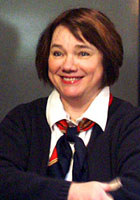 Kate Nelson is a consultant, Wharton professor and author specializing in ethics program design and strategic organizational communications.
Kate Nelson is a consultant, Wharton professor and author specializing in ethics program design and strategic organizational communications.
- Formerly a senior fellow in ethics at The Wharton School, University of Pennsylvania, she currently teaches business ethics at Wharton Executive Education and to executive MBA students at the University of Delaware.
- Co-author, with Pennsylvania State University Professor Linda Klebe Trevino, of Managing Business Ethics (published by Wiley; 4th edition due in August 2006)
- Consultant on ethics and communications for 15 years
- Formerly a principal and communication practice leader for Mercer HR Consulting in Philadelphia
- Formerly vice president and head of worldwide HR communications at Citicorp in New York City; held similar positions at Merrill Lynch and Honeywell
- Guest speaker on ethics and values at many conferences and organizations, including the Conference Board, World@Work, Society for Human Resources Managers, Young Presidents’ Organization, the Ethics’ Officers Association and Wharton Executive Education.
- She has designed and/or conducted ethics training programs for numerous business schools, including Harvard, University of Chicago, Columbia, Vanderbilt, NYU, MIT, Temple and Northwestern; and for numerous organizations, including GE, Johnson & Johnson, J.P. Morgan, Prudential Securities, Morgan Stanley, Aviva, Degussa, Shell Oil, AC Nielsen, Glaxo SmithKline, Citibank, Dupont, Lockheed Martin and NASA.
- The ethics game that Kate created at Citicorp, The Work Ethic, was awarded the Gold Quill of Excellence by the International Association of Business Communicators (IABC) in 1987 and was featured in numerous media, including the Wall Street Journal, Financial Times and Fortune.
- Communications she created have been recognized by the American Institute of Graphic Artists, the Art Directors Guild, the IABC, and have been exhibited in the Whitney Museum of Art in New York.
- She received her B.A. from the College of Mount St. Vincent in New York City and has been affiliated with Wharton since 1991. Kate also is a 2002 graduate of Leadership, Inc., a Philadelphia organization that mobilizes the private sector on behalf of the community and trains executives to serve on boards of directors.
- She is a member of the Council of Communication Management (CCM).
Forward-thinking marketing and public relations executives are using the power of podcasting to communicate directly with their key audiences via the Net. Find out what podcasts are and how you can put them to work for your organization. This webinar, led by the producer and host of the popular podcast On the Record…Online, will take you through the process in five easy steps, to arm you with the knowledge you need to evaluate and decide how to integrate this effective, efficient channel into your marketing or communications program.
Learning Topics:
- The ABCs of Podcasting: what podcasts are and where they came from, how to use them, popular formats and lengths, how to measure and monitor them, and more
- Getting started: the equipment you’ll need, where to find freeware and commercial podcasting software, and troubleshooting staples
- Production tips: how to conduct and record live and phone interviews, what freeware to use to edit your podcast, and how to find podcasts through directories and search engines
- Business case studies: Hear excerpts from leading business podcasts, and learn how Disney and IBM use podcasts to promote events and thought leadership
- Marketing your podcast: Get a primer on RSS-enabling and uploading your podcast, learn how to launch a blog to distribute your podcast, and get valuable leads on how to promote your feed.
Instructor:
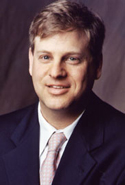 Eric Schwartzman is managing director of Schwartzman & Associates, a boutique public relations firm based in Los Angeles that specializes in helping organizations integrate the Web into their marketing and public relations programs. He is also chairman and founder of iPressroom, which helps organizations extend the impact of their public relations, corporate communications and marketing programs through easy-to-use, marketing communications software tools and services.
Eric Schwartzman is managing director of Schwartzman & Associates, a boutique public relations firm based in Los Angeles that specializes in helping organizations integrate the Web into their marketing and public relations programs. He is also chairman and founder of iPressroom, which helps organizations extend the impact of their public relations, corporate communications and marketing programs through easy-to-use, marketing communications software tools and services.
A recognized expert in the field of new media marketing communications, Eric has presented at numerous conferences and seminars and has appeared at many colleges and universities. He is regularly quoted in articles on podcasting, blogging and new media in publications such as Advertising Age, PR Week, Podcasting News, Econtent, PR News and Media Relations Insider. He blogs about how public relations, the news media and emerging technologies influence perception and shape popular opinion at the Spinfluencer. His podcast On the Record… Online features discussions with leading journalists about how they use technology to cover the news.
Testimonials:
- “Eric makes it easy to understand how to use podcasts to communicate to your key audiences.” Ava Gutierrez, media relations director, County of Los Angeles
- “Just the right amount of information — not too technical and applicable specifically for creating a podcast campaign.” Sarah Prinster, director of marketing, Savi Technology
- “… a must for any marketing or PR exec who wants to get up to speed with podcasting.” Sally Falkow, APRP, Expansion Plus




